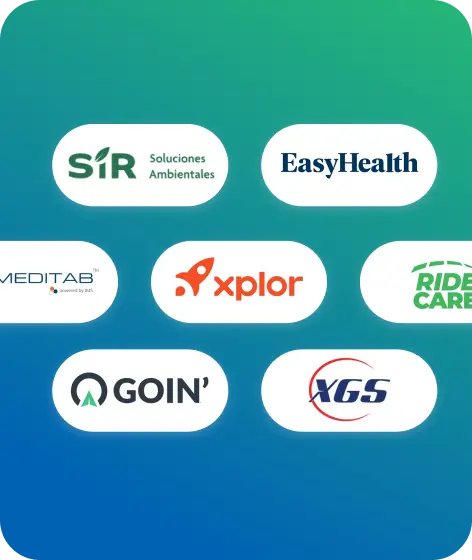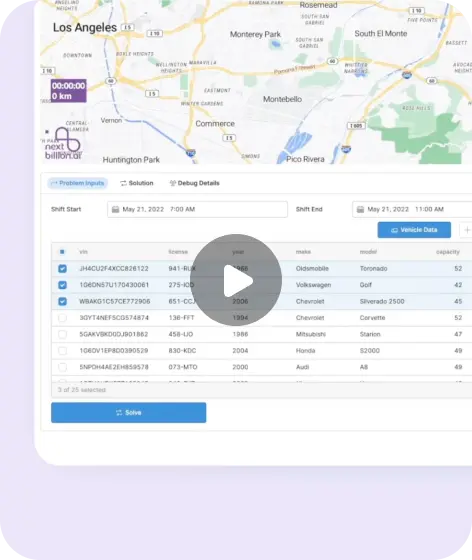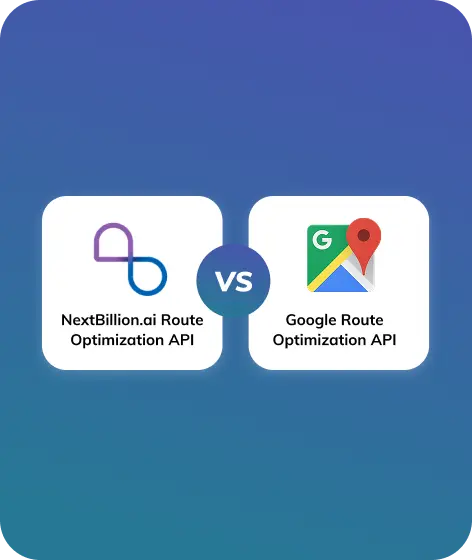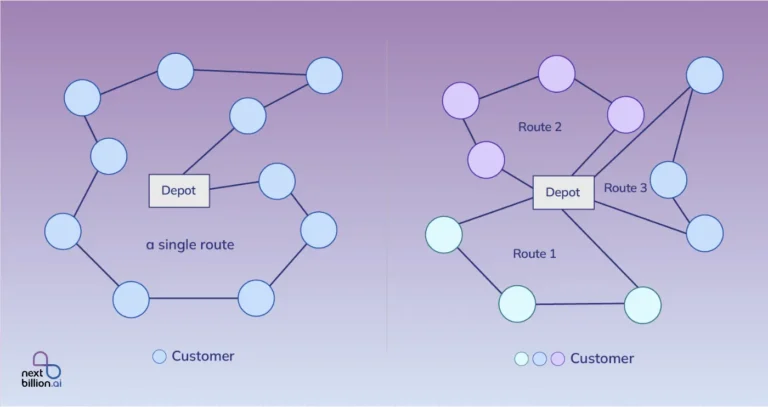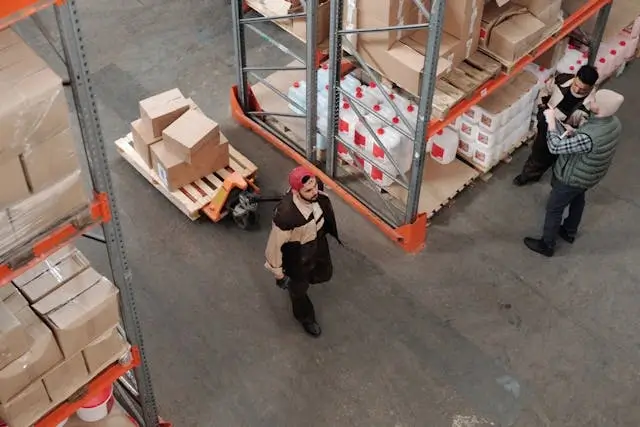
Table of Contents
Before getting to know what a Delivery Exception is, let’s understand when this situation occurs. You all already know that logistics and supply chain plays a major role in delivering goods and services to different customers and in various locations across the world. Delivery of goods and services are done through different modes of transportation such as trains, trucks, ships, 2-wheelers, and so on. While every such carrier services makes extreme efforts ensuring safe delivery of these products, there can be instances where the ability of delivering the products on time becomes unreal due to various factors. It can either be internal or external factors. In such cases, these companies should have a back-up plan to ensure customers’ happiness by responding and giving away perks. By this they can retain their customer-base in spite of having delivery delays. So, such a situation can be termed as a “Delivery Exception”.
Now that you know what a Delivery Exception is, let me take you through the journey of exploring everything that is related to Delivery Exception. You need to know why Delivery Exceptions occur, the common types of Delivery Exceptions, Causes for Delivery Exceptions, impact on the deliveries, how to manage and prevent Delivery Exceptions, and so on.
How delivery Exceptions Occur?
Delivery exceptions occur when unforeseen events or circumstances disrupt the shipping or delivery process, preventing a package from being successfully delivered. Common causes include incorrect or incomplete address information, weather-related delays, failed delivery attempts, customs clearance issues for international shipments, and damage to the package during transit. These exceptions can interrupt the smooth flow of deliveries, resulting in delays and additional expenses for businesses. Managing delivery exceptions effectively is essential, as they can significantly affect customer satisfaction, revenue, and brand reputation by impacting the reliability and timeliness of deliveries.

What is a Delivery Exception?
Delivery Exception can be defined as a temporary delay in delivering your package due to unexpected and unforeseen circumstances. This means that the delivery was delayed due to an issue in packaging, due to delay in procuring raw materials, due to production issues, due to distribution efforts, manpower optimisation, cost, environmental issues, political conspiracies, and so on.
Therefore, note that delivery exceptions does not always mean that the shipment was late but it could also be due to other reasons that had an unplanned impact on the delivery.
What are the Common Types of Delivery Exceptions

- Weather-Related Delays: Severe weather conditions such as snowstorms, hurricanes, or floods can disrupt transportation routes, leading to delays and delivery exceptions.
- Incorrect Address or Missing Information: When a shipping address is incomplete or incorrect, couriers may need additional time to verify or correct the details, causing delays.
- Failed Delivery Attempts: If the recipient is unavailable or there’s no secure location to leave the package, the delivery driver may record a failed attempt, resulting in a delivery exception.
- Damaged or Lost Packages: Packages can become damaged or lost during transit, requiring investigation and potentially delaying delivery.
- Customs Issues: International shipments may face delays during customs clearance due to missing or incorrect documentation, extra inspections, or regulatory compliance issues, creating a delivery exception.
Understanding these common types helps businesses and recipients proactively address issues to minimize disruptions and ensure timely delivery.
What are the Causes for a Delivery Exception?
Delivery exceptions arise from various factors that can be broadly categorized into internal factors, external factors, and customer-related factors. The following are the detailed causes from each category:
Internal Factors
Issues within the shipping company or carrier’s control, often arising from human or system errors:
- Incorrect Labeling or Sorting: Mislabeling or routing errors during package handling.
- Technology Failures: Malfunctions in scanners, tracking systems, or automated sorting equipment.
- Operational Delays: Fulfillment backlogs or resource shortages, especially during peak seasons.
External Factors
Uncontrollable elements that disrupt the delivery process:
- Weather Conditions: Severe events like hurricanes, snowstorms, floods, or wildfires affecting transit routes.
- Traffic or Accidents: Road closures, heavy congestion, or unexpected accidents delaying transport.
- Customs Delays: Hold-ups during international shipments due to incomplete or incorrect documentation.
- Federal Holidays: Non-operational days causing backlogs in the origin or destination country.
- Carrier Issues: Mechanical breakdowns, staffing shortages, or other logistical inefficiencies.
Customer-Related Factors
Errors or circumstances involving the recipient that contribute to delays:
- Incorrect or Incomplete Address: Errors in the shipping details provided by the customer.
- Unavailable Recipient: Delivery fails if a signature is required and the recipient is absent, or if access is restricted.
- Refused Package: Delays caused when a customer declines to accept the delivery.
Additional Factors
Unique or rare challenges that disrupt deliveries:
- Missing Documentation: Incomplete customs paperwork or insufficient shipping information.
- Animal Interference: Instances where animals obstruct delivery routes or damage packages.
- Acts of God: Natural disasters or unforeseen regional events temporarily halting delivery operations.
Addressing Delivery Exceptions
To minimize these disruptions, shipping companies and carriers can:
- Enhance Processes: Streamline workflows and reduce operational inefficiencies.
- Leverage Technology: Implement robust tracking systems and automate sorting tasks.
- Train Employees: Educate staff on best practices to reduce human errors.
- Communicate Proactively: Inform customers about delays and collaborate to resolve issues.
By addressing these factors, companies can reduce delays, optimize costs, and ensure high levels of customer satisfaction.
Effects of Delivery Exceptions on your Business
Delivery exceptions can create substantial challenges for businesses, especially in the e-commerce sector. These disruptions affect operations, customer relationships, and financial performance. The following are its consequences:
1. Reduced Customer Satisfaction
Unresolved delivery exceptions often lead to delayed or undelivered packages, frustrating customers. Even with tracking systems, unexplained delays will reduce trust and loyalty.
2. Higher Churn Rates
Customers who face poor delivery experiences are less likely to return for future purchases. This loss of repeat business directly impacts customer retention and reduces their lifetime value.
3. Damaged Brand Reputation
Consumers frequently hold businesses accountable for delivery issues, even if the fault lies with external carriers. Repeated delivery exceptions can harm a brand’s image, making it harder to build and sustain a loyal customer base.
4. Decreased Revenue
Delivery exceptions contribute to financial losses in several ways:
- Lost Sales: Customers cancel orders or switch to competitors due to delays.
- Increased Costs: Re-shipping, refund processing, and replacing lost inventory reduce profit margins.
5. Resource Strain
Delivery exceptions put additional pressure on business resources:
- Customer Support Overload: Handling “Where is my order?” (WISMO) queries increase the burden on support teams.
- Operational Bottlenecks: Returns, refunds, and re-shipping require time and resources, delaying other tasks.
- Marketing Losses: Loss of customer lifetime value (CLTV) and wasted marketing investments due to dissatisfied customers.
6. Mitigating the Effects of Delivery Exceptions
To minimize the impact, businesses should implement proactive measures:
- Partner with Reliable Carriers: Work with trusted logistics providers to ensure smoother delivery operations.
- Adopt Advanced Tracking Systems: Use technology for real-time tracking and timely communication with customers.
- Resolve Issues Transparently: Address delivery exceptions promptly, keeping customers informed to rebuild trust.
By adopting these strategies, businesses can reduce disruptions, maintain customer loyalty, and protect profitability despite delivery challenges.
7 Steps to Reduce Customer’s Delivery Exceptions
Delivery exceptions are a common challenge for ecommerce businesses, but proactive strategies can significantly minimize their occurrence. The below are the 7 steps that you can take to reduce customer’s delivery exceptions.
1. Provide Customers with a Tracking Page
- Implement a real-time shipment tracking system that allows customers to monitor their packages.
- Share tracking numbers and updates through email, SMS, or a dedicated tracking page.
- Clear visibility increases a successful delivery, as customers can plan to receive packages promptly and that can make them plan their time to receive.
2. Verify Delivery Addresses
- Use automatic address validation tools to identify and correct invalid or incomplete addresses.
- Allow customers to modify address details if errors are identified before shipment.
3. Enable Shipping Notifications
- Send proactive updates about the shipping status, including tracking links and estimated delivery times.
- Notify customers of potential delays or issues in real time.
- Leveraging email and SMS notifications can improve transparency and reduce customer inquiries about delivery status.
4. Optimize Logistics Processes
- Distribute inventory across multiple fulfillment centers to enable shipping from the closest location.
- Prepare contingency plans for disruptions caused by weather or other unforeseen events.
- Optimized logistics (For example: Nextbillion.ai) enhances supply chain resilience, reducing the chances of delivery exceptions.
5. Use Weather-Resistant Labels
- Protect package information with weatherproof labels and waterproof ink to avoid damage during transit.
- Ensure that package labels remain legible in adverse conditions like rain or snow, reducing the risk of misdelivery.
6. Partner with Multiple Carriers
- Work with a variety of carriers to leverage their strengths and minimize reliance on a single provider.
- Address carrier-specific limitations, such as PO boxes or restricted destinations, by selecting appropriate services.
- Fulfillment partners like Nextbillion.ai can negotiate discounts and offer flexible carrier options to suit business needs.
7. Leverage Order Fulfillment Software
- Invest in logistics software to automate and improve processes, including address verification, inventory distribution, and tracking updates.
- Ensure that all order details, including addresses and shipping preferences, are accurate before shipment.
- Tools like NextBillion.ai’s software offer comprehensive features that support efficient order fulfillment and reduce exceptions.
By following these steps, businesses can reduce delivery exceptions, improve customer satisfaction, and enhance operational efficiency. A proactive approach to addressing delivery challenges fosters customer trust and drives long-term success.
How can you Ensure Customer Satisfaction after a Delivery Exception Notice?
Delivery exceptions can be frustrating for customers, but businesses have the opportunity to turn a potential negative experience into a positive one by handling the situation effectively. Here are strategies to ensure customer satisfaction after a delivery exception notice:
1. Communicate Transparently and Promptly
- Notify the Customer Immediately: Send a clear and timely message about the delivery exception, including the reason and expected resolution.
- Provide Regular Updates: Keep the customer informed of any changes or progress, whether via email, SMS, or phone.
2. Apologize and Show Empathy
- Acknowledge the Inconvenience: Start the communication by apologizing for the delay or issue.
- Express Understanding: Show empathy and reassure the customer that resolving the issue is a top priority.
3. Offer a Solution
- Reschedule Delivery: Arrange for a new delivery date or time convenient for the customer.
- Provide Alternatives: Offer options like pick-up from a nearby location, expedited shipping, or a replacement.
- Refund or Compensation: If applicable, consider offering a discount, refund, or coupon as a gesture of goodwill.
4. Proactively Address the Root Cause
- Explain the Reason: Provide a brief, clear explanation for the delay (e.g., weather conditions, incorrect address, etc.).
- Outline Preventive Measures: Reassure the customer that steps are being taken to prevent similar issues in the future.
5. Make It Easy to Reach Support
- Offer Direct Assistance: Provide customers with access to a dedicated support representative for personalized attention.
- Extend Operating Hours: Ensure your support team is available to address concerns promptly, especially during peak times.
6. Maintain a Positive Brand Image
- Stay Professional: Maintain a courteous tone throughout all communications.
- Reiterate Commitment to Service: Remind the customer of your dedication to providing excellent service, even in challenging situations.
7. Follow Up After Resolution
- Confirm Delivery: Check back with the customer to confirm that the package was successfully delivered.
- Solicit Feedback: Ask for feedback on how the situation was handled and use it to improve your processes.
- Thank the Customer: Express gratitude for their understanding and patience during the resolution process.
By addressing delivery exceptions with transparency, empathy, and effective problem-solving, businesses can not only retain customers but also strengthen their loyalty and trust in the brand.
How can you handle delivery exceptions effectively?
To handle delivery exceptions effectively, businesses should immediately identify the cause through tracking information and communication with the carrier. Once the issue is understood, it’s crucial to notify the customer promptly with clear information and offer a resolution, such as rescheduling delivery, offering alternatives, or providing compensation. Maintaining open communication throughout the process is key, keeping the customer informed with regular updates. Collaborating with reliable carriers, using automated address validation tools, and implementing preventive measures like optimizing logistics can reduce future exceptions. Additionally, training customer support teams and analyzing exception data helps improve response times and processes. By proactively managing delivery exceptions, businesses can ensure customer satisfaction, protect their reputation, and improve long-term operational efficiency.
How Nextbillion Helps with Delivery Exceptions?
NextBillion.ai helps businesses effectively manage and reduce delivery exceptions by providing advanced route optimization and real-time tracking solutions. Their platform integrates machine learning and AI to optimize delivery routes, taking into account factors like traffic, weather, and other external conditions, which helps minimize delays caused by unforeseen events. Below are few of NextBillion.ai’s features that enables you to have a better delivery experience without exceptions:
- NextBillion.ai’s Real-Time Tracking and Monitoring provides live tracking of shipments to identify delivery exceptions as they occur. It offers actionable insights for timely interventions.
- NextBillion.ai’s Dynamic Route Optimization reroutes deliveries dynamically to avoid delays caused by traffic, road closures, or other unexpected obstacles. It ensures timely deliveries even in challenging conditions.
- NextBillion.ai’s Predictive Analytics identifies patterns in delivery exceptions to predict and minimise potential issues. It provides data-driven insights to optimize logistics operations.
- NextBillion.ai’s Improved Customer Services minimizes delivery exceptions, ensuring faster resolutions and improved delivery reliability. It enhances overall customer experience, leading to higher retention rates.

Conclusion
In conclusion, effective management of delivery exceptions is crucial for maintaining customer satisfaction and business efficiency. While various factors, such as incorrect addresses, weather disruptions, or carrier limitations, can lead to exceptions, leveraging the right tools and strategies is essential for mitigating their impact. NextBillion.ai stands out as a top solution in this space, offering powerful features like advanced route optimization, real-time tracking, dynamic rerouting, and comprehensive analytics. By utilizing NextBillion.ai’s platform, businesses can proactively address delivery issues, minimize delays, and ensure smoother logistics operations. With its AI-driven approach, NextBillion.ai helps companies stay ahead of potential disruptions, ensuring timely deliveries and enhancing the overall customer experience.
So act swiftly and book a Demo now <CTA>. With NextBillion.ai’s route optimisation and other related features you can bring the best out of your business without having a Delivery Exception.
About Author
Prabhavathi Madhusudan
Prabhavathi is a technical writer based in India. She has diverse experience in documentation, spanning more than 10 years with the ability to transform complex concepts into clear, concise, and user-friendly documentation.

